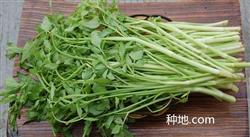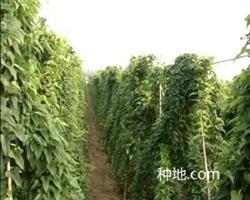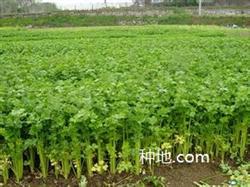How to grow pollution-free water celery?

How to grow pollution-free water celery? How should we proceed according to Zhao? Pollution-free planting methods of water celery: first, select excellent varieties of water celery with high yield, high quality and good taste, such as early-maturing white celery and late-maturing iron stalk green. 2. Key cultivation measures 1. Select a place with independent irrigation and drainage system, clean water source and no discharge of "three wastes" within 3 kilometers of the surrounding area. 2. Budding early celery in mid-late August and late celery in the first and middle of September, mature stalks with a diameter of 0.8-1.0 cm, uniform thickness, compact internodes, abundant axillary buds and no diseases and insect pests were selected as species. Beat the plants into small bundles with a diameter of 20 cm and stack them in a ventilated place with a height of 1-1.5 meters. The surrounding and upper parts of the seed pile are covered with straw to moisturize, covering day and night. Every day, the seed pile is watered thoroughly with cold water at 8: 00 a. M. and 4: 5 p. M. after 7-10 days of stacking, the axillary buds germinate and the short roots can be planted. 3. Soil preparation and budding at the same time. After deep ploughing, 4000 kg of rotten quail manure, 30-50 kg of high concentration compound fertilizer and 50 kg of superphosphate were applied per mu. In order to prevent the soil solution from being too acidic, 75-100 kg of quicklime can be applied per mu. At the same time, calcium fertilizer was applied to improve the disease resistance of the plant. Rake the field flat 3 days before planting. Trenches were made around the field to facilitate drainage and irrigation. At the same time, 15% EC was used to control weeds in the field. 4. Planting is carried out in the afternoon. Along the ditch around the field, the plant is perpendicular to the ditch, the base to the outside of the field, and the tip to the field. The distance between seeds and plants is 3-4 cm, neatly arranged in a circle. The rest of the field is released, and the general amount of plant per mu is 8-1000 kg. 5. About one month after planting, the seedlings have grown into independent individuals. At this time, the old stems of the plants have rotted, and the seedlings can be planted in the human soil in place. 6. Field management (1) Water management. After planting water celery in the field, keep the thin water layer, planting for 8-10 days, can be properly drained and shelved for 1-2 days. After taking root, gradually deepen the water layer to 3-4 cm to promote its fast growth. The water layer is generally kept at 8-10 cm throughout the prosperous period. In order to prevent freezing during the overwintering period, the water layer should be raised to 15-20 cm. (2) fertilizer management. Based on the application of base fertilizer, appropriate topdressing. The first topdressing was 15 days after planting, 5 kg of urea per mu, the second topdressing was about 15 days after the first topdressing, 15 kg of high concentration compound fertilizer per mu, and the third topdressing depended on plant growth. 7. The main pests of water celery are aphids, and the main diseases are spot blight and rust, so attention should be paid to safety control. More celery planting techniques
- Prev

How to prevent the deformity of yam?
How to manage in the later stage of planting Chinese yam? Which points should be paid attention to in the late management of planting Chinese yam? Experts remind as follows: ditch planting yam, timely cleaning of drains, timely drainage of rain to prevent ditches from collapsing. From early August to late September, combined with disease prevention and insect control, 0.2% potassium dihydrogen phosphate was sprayed on the leaves.
- Next

How should celery be fattened?
What should I do if I want celery to increase production? The yield of celery could be increased by spraying gibberellin solution, which could promote cell division and growth, and the nutrient absorption reached the peak 8 hours after spraying. According to the experiment, the best concentration of gibberellin to promote the growth of celery is 0.004%-0.009.
Related
- Where is it suitable to grow horseradish in China? it is expected to see the middle altitude horseradish in Alishan.
- How to prevent tomato virus disease reasonably? (Control methods included)
- Many people like to plant towel gourd on the balcony. What are the main points of this method and management?
- What crops can chili peppers be mixed with?
- Fertilization techniques and matters needing attention in Tomato
- What are the grafting techniques for peach seedlings in spring?
- Harm and control methods of root swelling disease of Chinese cabbage
- What are the pests of sweet potatoes? How to prevent and cure it?
- Symptoms, causes and Control methods of navel Rot in Tomato
- The cause of "Cucumber rotten bibcock" in Farmers' planting Cucumber and its Control Plan

